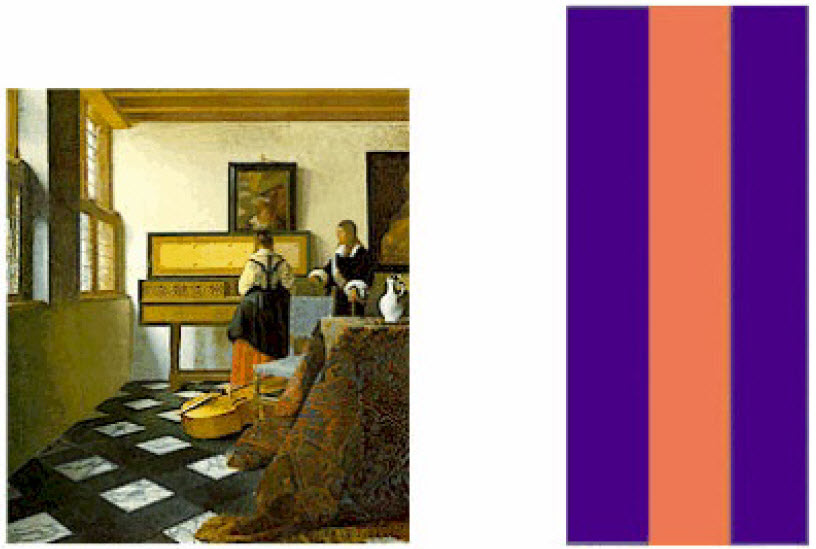You Are Reading the First 6 FREE Chapters (470 pages)
1.3.23 Postmodern Music and Other Postmodernism Examples
It’s one thing to create original art. It’s another to create inhuman original art.
Artistic movements such as postmodernism in music and other arts represent brave attempts by artists to break free of our evolved human nature.
It doesn’t work.
Human brains evolve with glacial slowness. Biologically, we humans still have brains adapted to Stone Age conditions, like it or not. Humans have been hunter-gatherers for more than 99 percent of human history. No amount of enculturation can change that.
Most people don’t hang postmodern canvasses of meaningless stripes and blobs on their walls—unless under peer pressure. Nor do they read disjointed gibberish. Nor do they listen to atonal (“serial”) music.
Cultural relativists insist all art is equal. No such thing as “good” art or “bad” art. A Sunday painter’s crude rendering of Elvis has just as much aesthetic value as a Monet.
Consider these two paintings. One is Jan Vermeer’s “The Music Lesson.” The other is Barnett Newman’s “Voice of Fire” (technically an example of abstract expressionism, but not unlike postmodern artist Damien Hirst's "spot paintings").


The Vermeer speaks for itself. As for “Voice of Fire”—it’s exactly what you see: three vertical stripes, a work of “art” devoid of a scintilla of imagination or skill. The National Gallery in Ottawa, Canada, authorized the payment of $1.76 million for “Voice of Fire.” Cultural relativists deemed it a bargain.

